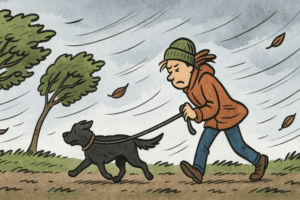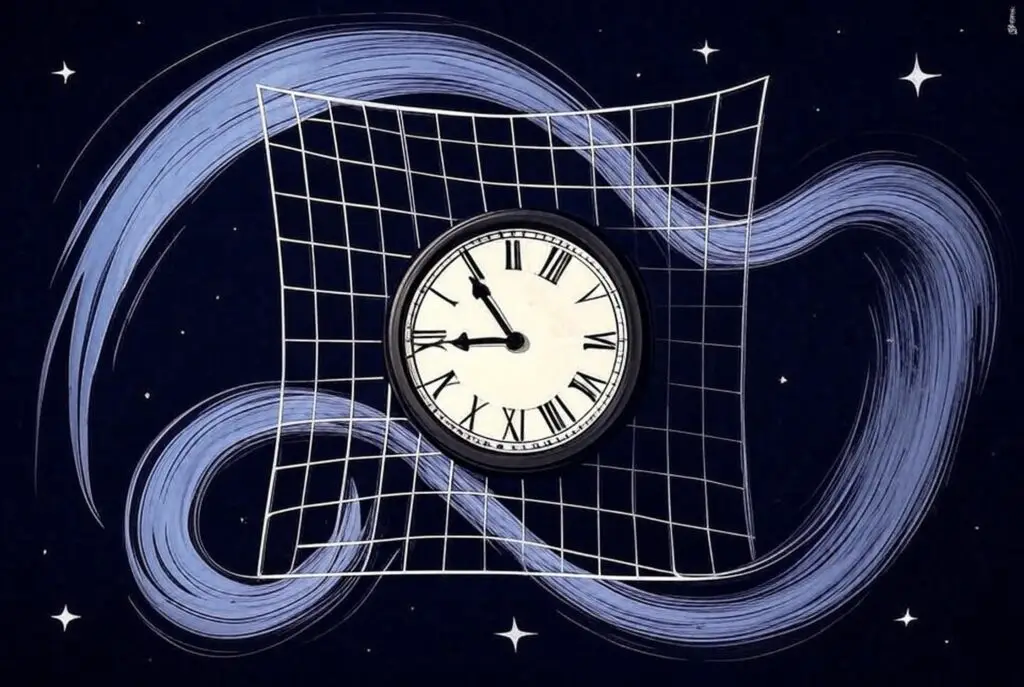As the UK experiences Storm Amy It’s windy. Trees are swaying when we step out the door to walk our Black Labrador. This sparks thoughts about what generates motion. I think back to my younger years learning Newton’s Laws of motion. How simple they appear yet how powerful they are. I notice the wind speed has doubled since the previous walk, but the force on me feels much more than double. I muse about what is happening …
The trees and pedestrians feel the wind by the impact of the mass of the air as it hits them. The air is moving. This movement is generated by a difference in pressure from place to place on our planet. Pressure is higher where the wind has come from and lower where it is going to. I think about all those particles of air, with mass, that are travelling on their way. When they hit me, I temporarily bring their journey to a halt.
Let’s give our wind mass ![]() and assume that a small area
and assume that a small area ![]() stops the wind. There is a length of this wind tube upstream that we will call
stops the wind. There is a length of this wind tube upstream that we will call ![]() . The wind is travelling in this direction. We will assume when the wind stops it suffers a negative acceleration
. The wind is travelling in this direction. We will assume when the wind stops it suffers a negative acceleration ![]() to impart a force
to impart a force ![]() over the area
over the area ![]() to generate a pressure
to generate a pressure ![]() . Newton’s Second Law of motion states
. Newton’s Second Law of motion states ![]() . Newton’s Third Law states that to every action there is an equal and opposite reaction. The static equilibrium condition, as the wind stops momentary, is given by:
. Newton’s Third Law states that to every action there is an equal and opposite reaction. The static equilibrium condition, as the wind stops momentary, is given by:
(1) ![]()
If the mass density of the volume
(2) ![]()
This differential equation can be solved by simple integration using the limits of zero velocity when it stops and a velocity of
(3) ![]()
The pressure exerted by the wind is a function of the velocity squared! If we double the wind speed we feel an increase in force of 4 x. The motion on our walk now feels fully justified for a wind speed that is only double that of a breezy day in the UK.



